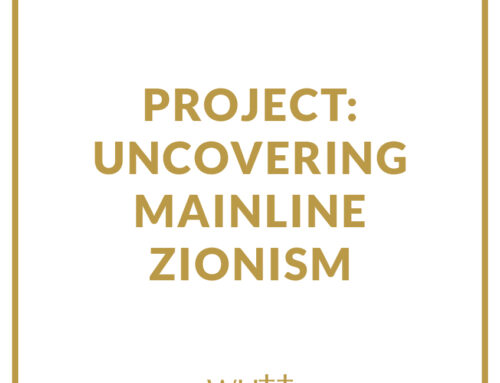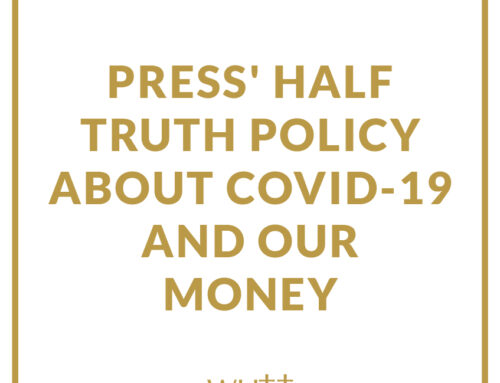Counting the economic cost of South Africa’s lockdown: Government’s initial response was justified, but its strategy has morphed.
Andrew Lapping / 11 May 2020 00:06 ‘Economic destruction costs lives’
As South Africans, we want our country to prosper and the quality of life for all those living within our borders to improve.
Millions live in total poverty and rely on family or intermittent work to get by. Life is tough, and often short, as malnutrition and hardship take their toll. The most effective way to lift people out of poverty and improve quality of life is through education and economic growth.
I am concerned that our government’s lockdown approach and the subsequent economic hardship inflicted on our people will cost more lives than it can save. I realise this is a controversial statement in a context where people are very fearful and understandably concerned about their health and the wellbeing of their families. An effective government must make difficult decisions that involve trade-offs and cost-benefit analysis.
I am not saying we should trade lives for economic growth; I am saying we must consider how we can save as many lives as possible and give better lives to as many South Africans as possible with our limited resources.
Initial intent
There are two important questions:
- How many Covid-19 fatalities can be avoided through the lockdown?
- What is the economic, and therefore human, cost of the lockdown?
I will not go into detail on the potential number of lives saved by the lockdown. There is a great deal of information available that indicates the lives saved by this strategy will be minimal unless the lockdown means the number of infections can be suppressed until a vaccine becomes available.
Data indicates that the mortality rate for those below 70 years of age is less than 0.2%; only 2.9% of South Africa’s population is older than 70. Furthermore, lockdowns – or a lack thereof – seem to make little difference to the total number of cases a country experiences. It sounds tragic and defeatist, but it is not possible to make the virus disappear through lockdown, particularly in a country like SA.
Economic and human costs are two sides of the same coin.
Studies indicate that mortality rates double with job losses.
A smaller economy means fewer resources to allocate to healthcare and education in future.
National Treasury thinks up to seven million people could lose their jobs. This could lead to tens of thousands of additional deaths.
The stimulus package outlined by the government is R500 billion. The South African Revenue Service (Sars) thinks tax collection could fall by more than R250 billion this year as a result of the shutdown.
Given government reallocations, this means an additional debt of approximately R500 billion in a single year. The economic damage will linger, tax collections are unlikely to recover to previous levels for years to come.
The R50 billion interest bill on this additional debt burden means R50 billion less to spend on education, healthcare or other services – not just in 2020, but in perpetuity.
An extreme worst-case scenario for South Africa is 150 000 Covid-19 deaths (most models indicate worst-case scenarios of 50 000). This is based on 50% of people contracting the virus with a 0.5% fatality rate. (A more likely worst case is a 0.2% mortality rate of 50% of the population, which is 60 000). This is a huge number of deaths and a great tragedy. Let’s assume the lockdown manages to reduce the number of fatalities by 50% by suppressing the illness until a vaccine is discovered – this would be an incredible success; 75 000 lives would be saved.
The direct cost per life saved in this scenario is R6.6 million, while indirect costs will be far greater.
I know this puts a price on human life, but unfortunately this is what government has to do every day when allocating resources.
At the other end of the spectrum, if the disease can’t be stopped and a vaccine is not discovered, then almost no lives will be saved from Covid-19, but we will have destroyed the economy, increased government debt by R500 billion, and lost a great number of lives through higher mortality not related to the pandemic. SA’s 2020 budget called for healthcare spending of R229 billion and police expenditure of R221 billion; small amounts in comparison.
Mortality rate
Sadly, because SA is a poor country, we have a very high mortality rate, and therefore low life expectancy. More than 400 000 South Africans die from natural causes each year, including 37 000 from tuberculosis and 32 000 from diabetes. In addition, 15 000 die in road accidents and 21 000 are murdered. These deaths are equally tragic and perhaps even more so as they are often preventable.
Unlike Europe, SA has a limited social security net and an informal economy.
Many people have no savings and have lost their livelihood with the lockdown. Hunger is an immediate reality.
Malnourished children are disadvantaged for the remainder of their lives due to stunting. The government provides a child grant, but there are millions of immigrant children who have no access to this grant.
Just as economic growth and prosperity save lives, economic destruction and poverty cost lives.
So why am I writing this now? Because every week the lockdown continues, the economic cost compounds.
Since the lockdown came into effect [more than six weeks ago, on Friday, March 27], I have urged government to consider the full picture, including the human and economic costs of their decisions, and I have provided them with balanced data.
I have detailed how this data indicates that the lockdown strategy is tragically flawed. We can no longer afford to blame ‘the virus’, when the vast majority of the job losses and suffering is the consequence of a strategy that has not fully accounted for the human cost of the lockdown on the economy.
I hope that in making this commentary I am contributing to a heightened awareness of the issues, not emotion, underpinning this discourse.
The above comments represent my personal opinions and I understand that many people may strongly disagree with my views.
Andrew Lapping is chief investment officer at Allan Gray – this is an opinion piece he wrote last week.


